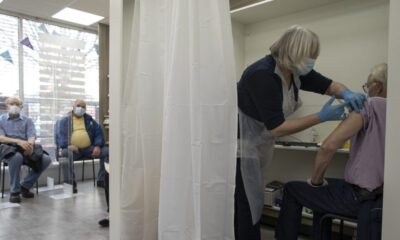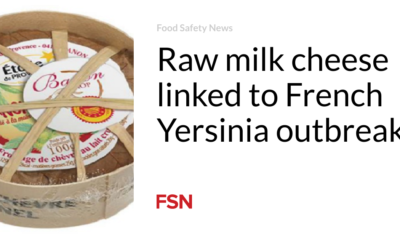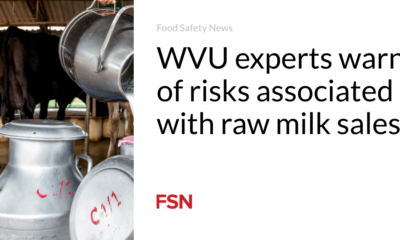Food
Risk warnings do not stop raw milk consumption

At a time when friends are not letting their friends drink raw milk and some world-renowned scientists with deep expertise on the H5N1 virus think the situation is so serious that it should be illegal to sell milk products that have not been pasteurized, what is happening is there isn’t much.
The raw milk activities continue. In fact, after the danger of bird flu from raw milk became known, the Delaware Legislature voted 14 to 5 in the Senate and 39 to 2 in the House to legalize the sale of raw milk in the state.
In doing so, Delaware joined 26 other states that currently allow the sale of milk without pasteurization, in light of the new danger posed by the bird flu virus. The H5N1 virus circulates in both birds and dairy cows. The Centers For Disease Control reports that as of July 15, there are 156 infected dairy herds in 13 states.
And as if legislative action wasn’t enough, raw milk sales in the spring saw a 21 to 65 percent increase over the previous year. The public did not receive or was not aware of the warnings about the health risks of drinking unpasteurized products during the bird flu outbreak in dairy cows.
The bird flu virus was first confirmed in American livestock on March 25.
Since then, the Food and Drug Administration and the Centers for Disease Control and Prevention have called raw milk one of the “riskiest” foods people can consume. “Raw milk can be contaminated with harmful germs that can make you very sick,” the CDC says on its website.
However, raw milk consumers are not giving up their favorite drink – at least not at the current warning levels.
The bad news is that milk from flu-infected cows shows the virus is present at concentrations that have surprised scientists. Anyone who accidentally drinks raw milk from infected cows can suffer serious consequences.
The good news is that when milk undergoes the regular pasteurization process, it becomes safe to drink. In a first-of-its-kind study, food safety scientists subjected milk to the process typically used by commercial milk processors.
The intent of the study was to further confirm that pasteurization is effective in inactivating the highly pathogenic H5N1 avian influenza virus (H5N1 HPAI) in fluid milk and other dairy products made from pasteurized milk.
The study found that the most commonly used pasteurization time and temperature requirements effectively inactivated the H5N1 HPAI virus in milk. These results complement the FDA’s initial sample survey, in which all 297 dairy product samples collected at retail locations were found to be negative for the viable H5N1 HPAI virus.
These studies provide strong assurances that the commercial milk supply is safe.
The pro-Raw Milk Institute posted a comment on social media about “BIRD FLU AND RAW MILK: A COMMON SENSE APPROACH.” There is concern among dairy farmers and biosecurity experts about a multi-state outbreak of bird flu affecting livestock in Texas, Kansas, Michigan, New Mexico and Idaho, raw milk advocates said.
“Several federal and state government agencies are using this cow disease outbreak as a platform to warn consumers against drinking raw milk,” say raw milk advocates. “However, when a mother becomes infected with a viral or bacterial infection, she will produce antibodies in her raw milk that will protect her young from the disease. This is one of the reasons why breastfed babies are known to have stronger immune systems than formula-fed babies. Antibodies in raw milk are one way nature ensures the strength and survival of the next generation.”
(Click here to sign up for a free subscription to Food Safety News.)













